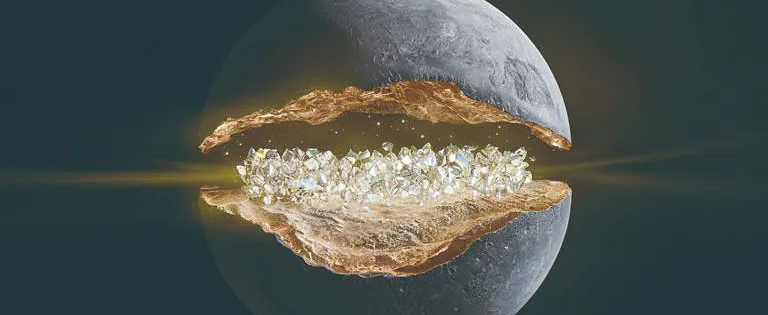Mercury’s Hidden Diamond Could Rewrite Planetary Science

For decades, science fiction has tantalized readers with visions of diamond-rich worlds.

In Arthur C. Clarke’s “2061: Odyssey Three”, deep beneath Jupiter’s moon — Europa’s cracked icy surface, past its hidden oceans, lies a core of pure diamond—a cosmic jewel of unimaginable size and perfection. This crystalline nucleus, forged by alien tech and Jupiter’s transformation, gleams with the fire of a thousand suns, its facets reflecting the dreams of explorers and the mysteries of the universe.
Now, in a twist that seems to bring fiction closer to fact, scientists have proposed that Mercury, our solar system’s innermost planet, may harbor a substantial layer of diamonds deep beneath its surface. This discovery not only pushes the boundaries of our understanding of planetary formation but also reignites the public’s fascination with the hidden treasures of our cosmic neighborhood.
Scientists from the Center for High Pressure Science and Technology Advanced Research in Beijing, along with co-workers from Belgium used advanced computer models and experimental data to investigate the planet’s interior structure. Their findings suggest that a layer of diamond, potentially up to 18 kilometers thick, could exist at the boundary between Mercury’s core and mantle.
“We’ve always known Mercury was special, but this discovery adds a whole new level of intrigue,” said lead researcher Dr. Yongjiang Xu. “It’s like finding out your quiet neighbor has been hiding a treasure trove of diamonds in their basement.”
How did these diamonds form? Picture Mercury in its early days, cloaked in a fiery sea of molten rock teeming with carbon. This carbon-rich environment set the stage for something truly extraordinary to unfold.
Later on, as Mercury gradually cooled down, pressures at the boundary between its core and mantle soared to extraordinary levels. It was under these extreme conditions that the magic of diamond creation began to take shape.
Then, over billions of years, as Mercury’s core solidified and transformed, it gently squeezed out carbon in the form of precious diamonds. These gems, borne from the depths of the planet, ascended and congregated to fashion a shimmering layer at the core-mantle boundary—a celestial ballet of diamond rain.
This interaction between carbon and pressure, unfolding across eons, has gifted Mercury with a hidden treasure trove of diamonds, offering a glimpse into the mesmerizing geological symphony that shapes our cosmic neighborhood.
 Proposed scenario for the formation of diamond at Mercury’s core-mantle boundary.
Proposed scenario for the formation of diamond at Mercury’s core-mantle boundary.
While this diamond layer is far too deep for any mining expeditions, the discovery has important implications for our understanding of planetary formation and evolution.
“This isn’t just about Mercury,” explained Dr. Xu. “It gives us new insights into how planets form and change over time, which could help us better understand Earth and other worlds in our solar system.”
The researchers caution that while their models strongly support this theory, direct observation is currently impossible. Future missions to Mercury could provide more data to confirm or refine these findings.

This discovery reminds us that even in our cosmic backyard, there are still remarkable secrets waiting to be uncovered. As we continue to explore our solar system, who knows what other hidden treasures we might find?



